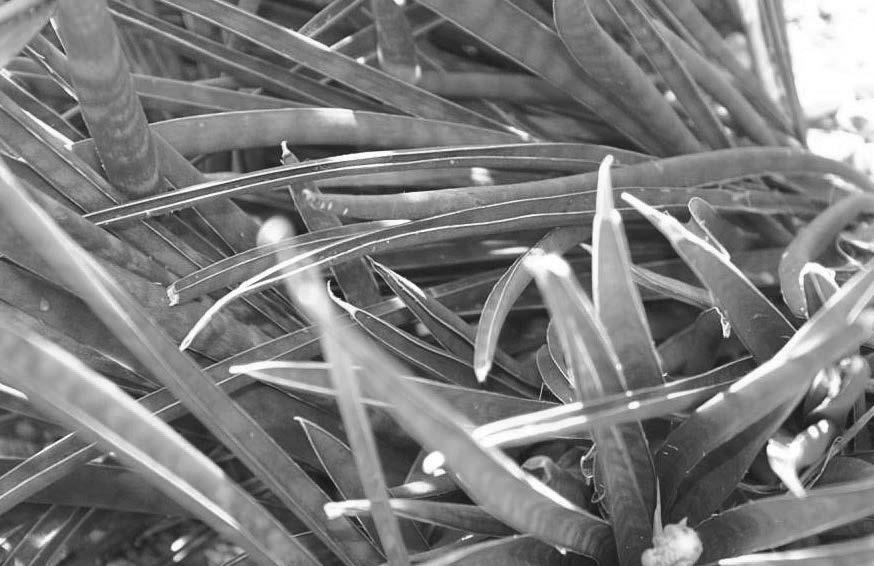
1 minute read
Lesson 8: Social organisation within the San community


Image 2.5: Sansevieria aethiopica
For the curious
Try to make your own bow and arrow or make your own snare by using material you find in nature.
Lesson 8 Social organisation within the San community
Define
Social organisation: the way groups are formed and how they interact in communities
Core content
The San’s social organisation was flexible and very informal. The way they lived did not have specific rules that everyone had to follow.
A few families of about 15 to 20 members each lived together, creating a tribal group. Each tribal group had its own hunting area and its own water supply, and this was respected by the other groups. The San did not have many possessions but what they did have was regarded as the common property of the group.

Image 2.6: A traditional San hut and family
The San had no formal leader or chief but ruled themselves by group consensus. They resolved fights and arguments through long discussions in which everyone who was involved in the fight had a chance to make themselves heard until some form of an agreement was reached. Certain individuals did have leadership roles regarding specific things, such as hunting or healing rituals, but there were no positions of general influence or power. The elders of the group were often called upon to be the mediators and overseers of the people.
This sense of equality filtered down to the family structure as well. The work was divided between men and women; the men had weapons and hunted, while the women searched for edible plants, cooked and took care of the children. Gender roles were not strict and women did occasionally hunt and men could also look for plants to eat.








